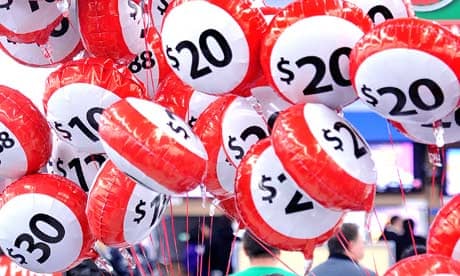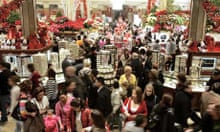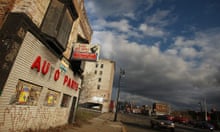Every year Black Friday brings dramatic price slashing, massive media coverage and hordes of shoppers. This year is no exception, with reports of a women deploying pepper spray against rival bargain-hunters.
Some 150m people are expected to hit the stores looking for deals this weekend. But the concept is a relatively modern one.
The term was used by police in Philadelphia in the 1960s to describe the massive crowds and traffic jams that hit the sales after Thanksgiving. It wasn't until the 1980s that an alternative theory started to appear, whitewashing Black Friday's reputation. The new definition claimed Black Friday got its name because it marked the start of the shopping season that retailers hoped would take their books out of the red and into the black.
More recently we've seen the arrival of Cyber Monday, when online retailers started offering deals aimed at shoppers returning to work after the Thanksgiving weekend break. But so fierce has been the reaction from bricks-and-mortar retailers, many of whom are increasingly selling online, that the internet retailers broke ranks and started offering discounts well in advance of Monday. Even Apple, which famously doesn't offer discounts, is holding an online sale this year. On Friday.
There's a lot of money at stake. The National Retail Federation expects holiday sales to top $465.6bn this year, up 2.8% on last year. But the reality of overhyped shoppers chasing headline-grabbing discounts can be brutal, as these videos show.
Black Friday's blackest day in recent history occurred in 2008 at the Wal-Mart in the Green Acres Mall in Valley Stream, New York.
A 2,000-strong crowd had gathered over night to take advantage of bargain's including 75% off a blu-ray player. When the doors finally opened one worker, Jdimytai Damour, 34, 6ft 5ins and weighing 270 pounds, was trampled to death by the bargain hungry crowd. Four others, including a 28-year-old woman described as eight months pregnant, were treated for minor injuries.
One shopper Kimberly Cribbs of Queens, told Associated Press the crowd had acted like "savages" even after the tragedy. "When they were saying they had to leave, that an employee got killed, people were yelling, 'I've been on line since yesterday morning,'" said Cribbs. "They kept shopping."
Every year anti-shopping campaigner Reverend Billy (no he's not a real reverend) and his Church of Not Shopping campaign against Christmas consumerism. Here he is reacting to the tragic death of Jdimytai Damour.
Perhaps we should be grateful that there are no big new toys to fight over this year.
Black Friday 2006 was all about PlayStation 3 and sadly proved a boon to those who like to argue video game violence has real world consequences.
This video is from Target in Buffalo, New York, last year. It's not hard to see how Black Friday can turn tragic.
The man stuck under those stampeding shoppers had to go to hospital.
And this video from a Target in Utah last year shows what most Black Fridays really look like: long lines, lots of shoppers, no violence.
Those Mormons know how to shop – so much more genteel. "I just got hit in the face with a bag," says the giggling, fresh-faced girl at 1:17. "We love Black Friday," someone shrieks at the end of the video. "We
really don't," comes the reply.






Comments (…)
Sign in or create your Guardian account to join the discussion